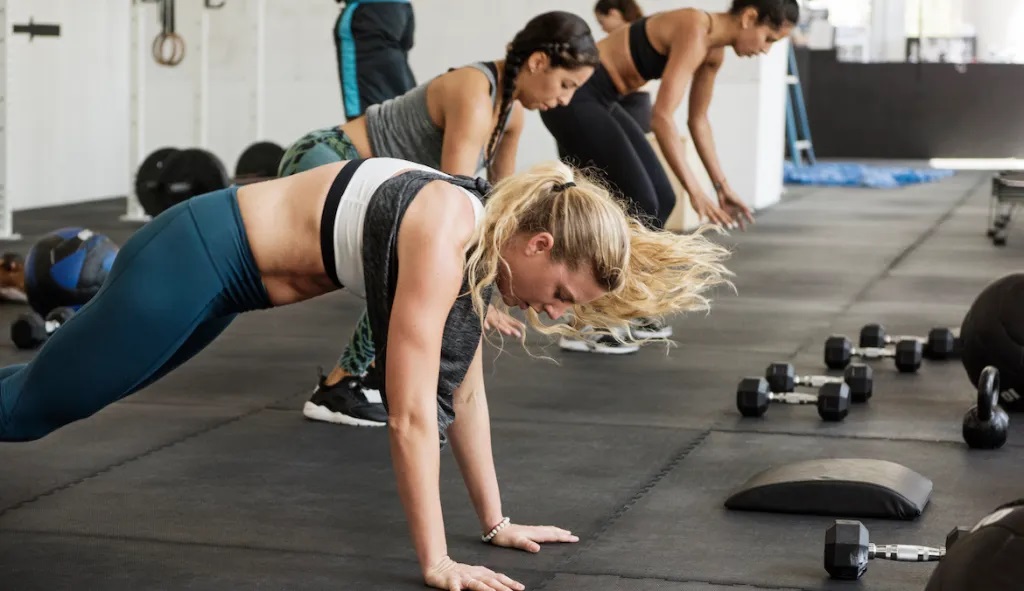The Benefits of Burpees and How to Do Them

Burpees are a high-intensity, full-body exercise that has earned a reputation as one of the most effective ways to improve overall fitness. Though they might seem simple at first glance, burpees engage multiple muscle groups, boost cardiovascular health, and enhance endurance. In this comprehensive guide, we’ll explore the myriad benefits of burpees and provide a detailed breakdown of how to perform them correctly.
The Benefits of Burpees
Full-Body Workout
Burpees are known for their ability to engage almost every muscle group in the body. Here’s a breakdown of how different parts are activated:
Legs: The squat and jump phases work the quadriceps, hamstrings, and calves.
Core: The plank and jump phases challenge the abs, obliques, and lower back.
Arms and Shoulders: The push-up phase targets the chest, shoulders, and triceps.
By integrating these muscle groups into a single movement, burpees provide a comprehensive workout that can enhance muscle tone and strength. Click Here
Cardiovascular Health
Burpees are an excellent way to get your heart rate up and improve cardiovascular fitness. The continuous nature of the exercise keeps your heart pumping, which can:
Increase Heart Efficiency: Regular burpee workouts can help improve the efficiency of the heart and lungs.
Enhance Endurance: Over time, this exercise can help build stamina and reduce fatigue during other physical activities.
Burn Calories: Due to their high intensity, burpees are effective for burning calories and can contribute to weight loss when combined with a balanced diet.
Functional Fitness
Functional fitness refers to exercises that mimic everyday activities. Burpees are highly functional as they combine squatting, jumping, and pushing movements, which can improve:
Coordination and Balance: Performing burpees requires coordination between different muscle groups, enhancing overall balance.
Flexibility: The range of motion involved in burpees helps maintain and improve flexibility in the hips, legs, and shoulders.
Core Stability: A strong core is crucial for stability and injury prevention, and burpees challenge the core throughout the movement.
Efficiency and Convenience
One of the major advantages of burpees is that they don’t require any special equipment. This makes them an ideal exercise for those who want an effective workout without needing a gym. Additionally:
Time-Efficient: Burpees can be done in short, intense bursts, making them perfect for quick workouts.
Versatile: They can be performed anywhere—at home, in a park, or even in a hotel room.
Mental Toughness
The intensity of burpees can be mentally challenging. Completing a set of burpees requires focus and determination, which can:
Build Resilience: Overcoming the challenge of burpees can help build mental strength and resilience.
Boost Confidence: Achieving personal bests or completing difficult workouts can enhance self-confidence and motivation.
How to Perform Burpees
Proper form is crucial for maximizing the benefits of burpees and minimizing the risk of injury. Here’s a step-by-step guide on how to perform a basic burpee correctly:
Starting Position
Stand Tall: Begin by standing with your feet shoulder-width apart and your arms by your sides.
Squat Down
Lower Into a Squat: Bend your knees and lower your hips as if you’re going to sit in a chair. Keep your back straight and your chest up.
Jump Back
Position for a Plank: Place your hands on the floor in front of you, just outside your feet. Jump your feet back so that you’re in a plank position.
Perform a Push-Up
Lower and Lift: While in the plank position, lower your chest to the ground by bending your elbows. This step is optional; if you’re new to burpees, you can skip the push-up at first.
Variations and Progressions
To keep your burpee routine fresh and challenging, consider incorporating these variations and progressions:
Burpee with Push-Up
Add Intensity: Include a push-up during the plank phase to increase the difficulty and engage your chest and triceps more effectively.
Burpee with Tuck Jump
Add a Tuck: When jumping up, bring your knees toward your chest. This variation increases the challenge to your core and cardiovascular system.
Burpee with Mountain Climbers
Incorporate Core Work: After jumping back into the plank position, perform a set of mountain climbers by alternating bringing your knees toward your chest. This adds a core workout to the burpee.
Common Mistakes and How to Avoid Them
To ensure you’re getting the most out of your burpees and avoiding injury, watch out for these common mistakes:
Poor Form
Avoid: Hunching your back, letting your knees cave in, or not fully extending your body during the jump.
Correct: Maintain a straight back, keep knees aligned with toes, and fully extend during the jump.
Insufficient Warm-Up
Avoid: Jumping into burpees without warming up, which can lead to injury.
Correct: Do a dynamic warm-up that includes movements like jogging, leg swings, and arm circles to prepare your body.
Conclusion
Burpees are a highly effective exercise that provides numerous benefits, including improved strength, cardiovascular health, and functional fitness. Their versatility and convenience make them an excellent addition to any workout routine. By mastering the correct technique, incorporating variations, and avoiding common mistakes, you can fully leverage the power of burpees to enhance your overall fitness.
Remember, as with any exercise, it’s important to listen to your body and progress at your own pace. Whether you’re a seasoned athlete or just starting out, burpees offer a dynamic and challenging workout that can help you achieve your fitness goals.

